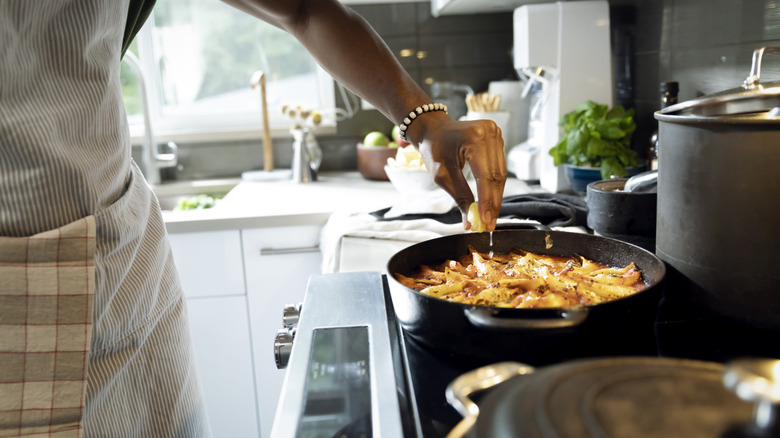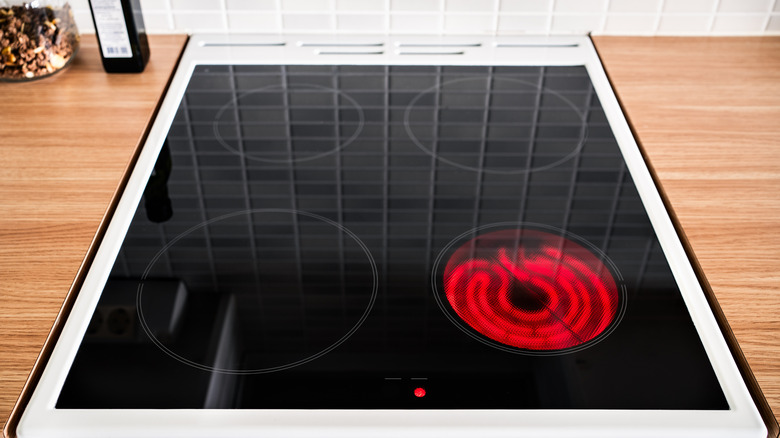Why You Should Think Twice Before Using Cast Iron On A Glass Stovetop
We may receive a commission on purchases made from links.
If people have been using a material since before the common era with great success, it's hard to imagine there's anything wrong with using it, ever. Such is the case with cast iron. The amazing material has been helping humans cook and complete other tasks since the 5th century BCE. But as tough and enduring as cast-iron cookware is, it's still not without a few flaws. Besides the "never wash cast iron" folk wisdom that pits soap and cast iron as enemies, it's also a mistake to use these types of pots and pans on glass top stoves. Sure, maybe you've prepared countless meals in cast iron atop a glass stovetop and never had a problem. However, there are risks that are worth knowing so you can prevent future damage — both minor and major — to your expensive appliance.
Just like you should take thoughtful steps to care for your cast-iron pan, it's fitting to give similar amounts of attention, if not more, to your glass stovetop. The heft of cast iron can easily scratch and stain the glass. In worst-case scenarios, setting down a cast-iron pan can even leave you with a shattered surface. However, if you have a glass cooktop, it's not necessary to bundle all of your cast iron off to the nearest thrift store. There are some safeguards that will allow you to keep cooking in cast iron on your glass stovetop without as much risk.
Safer ways to use cast iron on glass stovetops
For fans of cast iron who find themselves with a glass stovetop, the key to keeping that surface in working condition mainly comes down to how you heat and handle your cast iron vessels. In the quest to "wash" cast iron without ruining its finish, there's often burned food residue (ick!) on the outside rim of the pan and the base. This grime can discolor the glass, and burnt-on stains are far from the easiest types to remove. Only cook with clean cast-iron cookware.
Setting with lots of force or dropping them on the glass is an unsurprising way to break the surface, but there are other concerns besides blunt force. Sliding cast iron from burners, rather than lifting and placing them in a new spot, is also a common cause of scratches. Added attention to how you handle those pots and pans should preclude disaster, and if you do end up with mild scuffing, there's a toothpaste hack for glass cooktop scratches that works by buffing out the marks.
Even with these precautions, sometimes the uneven heat distribution on cast iron bases can cause thermal shock if too much heat is concentrated in a small spot. You can avoid this by slowly heating your pan rather than immediately cranking the dial up to high. Also, try using products like this Ilsa Heat Diffuser, which helps even out the heat when it's placed between the pot and the cooktop.

